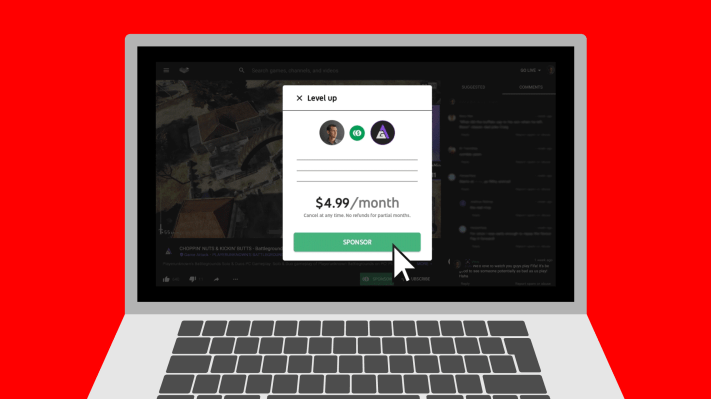YouTube Gaming, Google’s rival to game-streaming site Twitch, is starting to pick up traction. According to a new report from Streamlabs, Twitch continues to dominate the live streaming space, but YouTube grew its monthly active streamer base by 343 percent over the course of 2017. Twitch, by comparison, grew 197 percent.
Streamlabs has visibility into the live streaming market by way of its platform, whose tools are used by a number of streamers to grow their channels. That said, its data should be seen as a window into live streaming, not the full picture. It also isn’t tracking Facebook Live streams that are private, or the larger world of YouTube Live, only YouTube Live Gaming.
[gallery ids="1590959,1590958"]
Despite YouTube’s gains this year, any competitor to Twitch still has a long way to go to catch up.
Twitch’s streaming service saw some 27,000 concurrent streamers (the number streaming at the same time) in Q4 2017, while YouTube Gaming saw just 7,000.
Twitch also saw 788,000 concurrent viewers in Q4, up from 736,7000 in the prior quarter. YouTube was a distance second with 308,000 concurrent viewers, followed by Periscope’s 80,000, Facebook’s 27,500 and Microsoft Mixer’s 5,000.
[gallery ids="1590957,1590956"]
Notably, Periscope saw significant growth from Q3 to Q4, with a 48 percent increase in concurrent viewership, the report found. In the last quarter, the service had grown that figure by 80 percent. This could indicate that Periscope has found something of a sweet spot with gamers, the report suggests.
Though Twitch and YouTube are leading in terms of concurrent viewers and streamers, the services that saw the most growth in the fourth quarter of 2017 were Facebook and Microsoft Mixer, with 62 percent and 58 percent growth in active streamers, respectively. During this time, Twitch and YouTube only grew by 10 percent.
Streamlabs’ report also delved into the revenue generated across the streaming services by way of virtual tipping. This is becoming a serious source of income for gamers who stream across these services.
Periscope in 2017 made revisions to its payout structure to attract more streamers. It changed the policy so streamers could retain all their earnings from the sale of the “Super Hearts” – the animated icons that are bought by fans, then posted as a virtual tip. The service saw an increase in concurrent viewers in Q4, but not concurrent streamers – so it’s not clear how well this measure has worked to bring in new streamers.
[gallery ids="1590961,1590960"]
According to Streamlabs, tipping volume grew 25 percent in 2017 and doubled that from 2016. The company processed over $26 million in Q4, bringing the yearly total to $101 million. (To be clear, this is tipping volume on its platform only.)
Tipping, of course, is only one way that streamers make money. They also offer subscriptions (YouTube added these as “sponsorships” in September), and on Twitch gamers can sell games or promote other gaming gear through an Amazon extension that pays them a commission when buyers click through.
The company also wrapped the report with a few 2018 predictions, including its expectation to see more streamers and viewers, as well as a boost in mobile live streaming, and a jump in non-gaming verticals. Twitch has already gone after this market with sections on its site for vlogging and creative content, but other services are exploring live streaming as well, like HQ whose app now pulls in over 200,000 concurrent live viewers for its trivia game.
